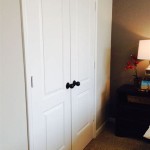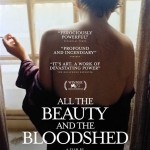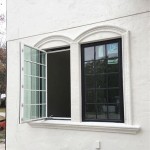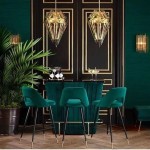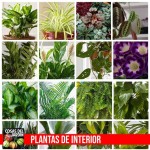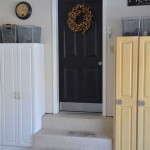```html
Top 10 Most Popular Interior Design Styles
Interior design is a dynamic field, constantly evolving to reflect societal trends, technological advancements, and individual preferences. While personal taste plays a significant role, certain styles consistently resonate with homeowners and designers alike. This article will explore ten of the most popular interior design styles, highlighting their key characteristics and enduring appeal.
1. Modern Style: Clean Lines and Functional Forms
Modern interior design, often confused with contemporary design, emerged in the early to mid-20th century. It emphasizes clean lines, simplicity, and functionality. Ornamentation is minimal, with a focus on showcasing the inherent beauty of materials like wood, steel, and glass. A neutral color palette, often punctuated by bold accents, is characteristic of the modern aesthetic.
Furniture in modern interiors is typically streamlined and unadorned, prioritizing comfort and practicality. Open floor plans are common, promoting a sense of spaciousness and flow. Natural light is maximized through large windows and minimal window treatments. The overall effect is one of understated elegance and functional efficiency.
Key elements of modern design include:
- Emphasis on horizontal lines.
- Neutral color palettes with pops of color.
- Use of natural materials.
- Minimal ornamentation.
- Open floor plans.
2. Contemporary Style: Evolving and Current
Contemporary design, unlike modern design, is not tied to a specific era. It reflects the styles and trends of the present moment, making it inherently dynamic and constantly evolving. This flexibility allows for a wider range of design choices, incorporating elements from various styles to create a unique and personalized space.
While sharing some similarities with modern design, contemporary interiors often feature softer lines, rounded shapes, and a greater emphasis on texture. Color palettes tend to be neutral, but bolder colors are also incorporated as accents. Sustainability is a growing focus, with the use of eco-friendly materials and energy-efficient appliances becoming increasingly common.
Contemporary design often incorporates the latest technologies, seamlessly integrating smart home features and innovative lighting solutions. The goal is to create a space that is both stylish and technologically advanced.
Key elements of contemporary design include:
- A focus on current trends.
- Neutral color palettes with bold accents.
- Use of sustainable materials.
- Incorporation of technology.
- An evolving aesthetic.
3. Minimalist Style: Less is More
Minimalist interior design takes the principles of modern design to an even greater extreme, embracing the concept of "less is more." It emphasizes simplicity, functionality, and the removal of unnecessary clutter. Spaces are typically sparsely furnished, with a focus on essential items that are both functional and aesthetically pleasing.
Color palettes are typically monochromatic, with a predominance of white, gray, and black. Natural light is crucial, creating a sense of openness and tranquility. Textures are used sparingly to add visual interest without overwhelming the space. The ultimate goal is to create a serene and uncluttered environment that promotes relaxation and focus.
Every item in a minimalist interior is carefully considered and chosen for its functionality and aesthetic value. Storage solutions are essential to keep clutter at bay and maintain the clean lines that define the style.
Key elements of minimalist design include:
- Simple and uncluttered spaces.
- Monochromatic color palettes.
- Emphasis on functionality.
- Minimal ornamentation.
- Carefully chosen furniture.
4. Scandinavian Style: Functionality and Hygge
Scandinavian interior design originates from the Nordic countries and is characterized by its functionality, simplicity, and emphasis on natural light. A key element of Scandinavian design is "hygge," a Danish word that describes a feeling of coziness, comfort, and well-being. This concept is reflected in the use of soft textures, warm lighting, and natural materials.
Color palettes are typically light and airy, with a predominance of white, light gray, and natural wood tones. Furniture is often made from light-colored wood and features clean lines and simple designs. Plants are commonly used to bring a touch of nature indoors, creating a sense of connection to the outdoors.
Scandinavian design prioritizes comfort and functionality, creating spaces that are both aesthetically pleasing and practical for everyday living. The use of textiles like wool and linen adds warmth and texture to the interiors.
Key elements of Scandinavian design include:
- Light and airy color palettes.
- Use of natural materials.
- Functional furniture.
- Emphasis on "hygge."
- Incorporation of plants.
5. Traditional Style: Timeless Elegance
Traditional interior design draws inspiration from classic European styles, emphasizing elegance, formality, and a sense of timelessness. Spaces are typically furnished with antiques, reproductions, and high-quality materials like wood, leather, and velvet. Symmetry and balance are key principles in traditional design.
Color palettes are often rich and warm, featuring colors like gold, burgundy, and forest green. Intricate patterns, such as damask and floral prints, are commonly used in textiles and wallpaper. Architectural details, such as crown molding and wainscoting, add to the overall sense of grandeur and sophistication.
Traditional interiors often feature collections of artwork, antiques, and decorative objects that reflect the homeowner's personal history and interests. The overall effect is one of refined elegance and timeless appeal.
Key elements of traditional design include:
- Symmetry and balance.
- Rich and warm color palettes.
- Use of antiques and reproductions.
- Intricate patterns.
- Architectural details.
6. Bohemian Style: Free-Spirited and Eclectic
Bohemian interior design embraces a free-spirited and eclectic aesthetic, rejecting traditional norms and embracing individuality. Spaces are typically filled with a mix of textures, patterns, and colors, creating a visually rich and stimulating environment. Vintage furniture, global textiles, and personal collections are common elements of bohemian design.
There are no strict rules in bohemian design, allowing for endless creativity and self-expression. Plants are often used extensively, adding a touch of nature and creating a sense of vibrancy. Low seating, floor cushions, and layered rugs contribute to the relaxed and inviting atmosphere.
Bohemian interiors often tell a story, reflecting the homeowner's travels, experiences, and personal style. The overall effect is one of warmth, authenticity, and a celebration of individuality.
Key elements of bohemian design include:
- Eclectic mix of textures and patterns.
- Use of vintage furniture and global textiles.
- Extensive use of plants.
- Low seating and layered rugs.
- Personal collections and mementos.
7. Industrial Style: Raw and Unrefined
Industrial interior design draws inspiration from the aesthetics of factories, warehouses, and other industrial spaces. It emphasizes raw materials, exposed structural elements, and a utilitarian aesthetic. Brick walls, concrete floors, and exposed pipes are common features of industrial interiors.
Color palettes are typically neutral, with a predominance of gray, black, and brown. Metal accents, such as steel and iron, add to the industrial feel. Furniture is often sturdy and functional, with a focus on durability and practicality. Vintage and repurposed items are frequently incorporated into the design.
Industrial interiors often feature open floor plans and high ceilings, maximizing space and light. The overall effect is one of ruggedness, authenticity, and a celebration of urban living.
Key elements of industrial design include:
- Exposed structural elements.
- Raw materials like brick and concrete.
- Neutral color palettes.
- Metal accents.
- Functional furniture.
8. Farmhouse Style: Rustic and Comfortable
Farmhouse interior design evokes the charm and simplicity of rural living. It emphasizes natural materials, comfortable furniture, and a warm and inviting atmosphere. Distressed wood, shiplap walls, and vintage accessories are common features of farmhouse interiors.
Color palettes are typically light and airy, with a predominance of white, cream, and soft pastels. Natural textures, such as linen, cotton, and burlap, add to the rustic feel. Open shelving, farmhouse sinks, and butcher block countertops are popular kitchen elements.
Farmhouse interiors often feature personal touches, such as family photos and handmade items, creating a sense of warmth and nostalgia. The overall effect is one of comfort, simplicity, and a connection to the land.
Key elements of farmhouse design include:
- Natural materials like wood and linen.
- Light and airy color palettes.
- Distressed furniture and vintage accessories.
- Open shelving and farmhouse sinks.
- Personal touches and handmade items.
9. Coastal Style: Breezy and Relaxed
Coastal interior design captures the essence of seaside living, creating a breezy and relaxed atmosphere. It emphasizes natural light, airy spaces, and a color palette inspired by the ocean and sand. White, blue, and beige are common colors in coastal interiors.
Natural materials, such as driftwood, seashells, and rattan, are often used in decor. Furniture is typically comfortable and casual, with a focus on relaxation. Nautical elements, such as ropes, anchors, and ship wheels, can be incorporated to add a touch of maritime flair.
Coastal interiors often feature large windows and open floor plans to maximize natural light and views of the ocean. The overall effect is one of tranquility, relaxation, and a connection to the sea.
Key elements of coastal design include:
- Light and airy color palettes inspired by the ocean.
- Natural materials like driftwood and seashells.
- Comfortable and casual furniture.
- Nautical elements.
- Emphasis on natural light.
10. Mid-Century Modern Style: Retro and Functional
Mid-century modern interior design refers to the style prevalent from the mid-1940s to the mid-1960s. It features clean lines, organic shapes, and a focus on functionality. Furniture is often made from molded plywood, plastic, and metal. Bright, bold colors are often used as accents against a neutral backdrop.
Mid-century modern interiors often feature open floor plans and large windows, maximizing natural light. Geometric patterns, such as atomic designs and abstract shapes, are common in textiles and artwork. The overall effect is one of retro sophistication and functional elegance.
This style experienced a resurgence in popularity in recent years as people appreciate its clean aesthetic and timeless appeal. Many iconic furniture pieces from this era are still highly sought after today.
Key elements of mid-century modern design include:
- Clean lines and organic shapes.
- Functional furniture made from molded materials.
- Bright and bold accent colors.
- Open floor plans and large windows.
- Geometric patterns.

Interior Design 101 Newest Tile Ideas 2025 Country Floors

Interior Design Styles 101 The Ultimate Guide To Decorating In 2025 Decorilla

Top 10 Interior Design Styles And Trends For 2025 Jane At Home

20 Interior Design Trends 2025 Must Have Looks You Ll Love Decorilla

10 Most Popular Home Interior Design Styles To Know In 2026 Archis

Interior Design Styles 101 The Ultimate Guide To Decorating In 2025 Decorilla

15 Best Modern Interior Design Ideas Of 2025 Decorilla

15 Best Modern Interior Design Ideas Of 2025 Decorilla

10 Contemporary Interior Design Ideas For Stylish Urban Living

2025 Interior Design Trends 10 Looks You Won T Regret In 5 Years Jane At Home
Related Posts

